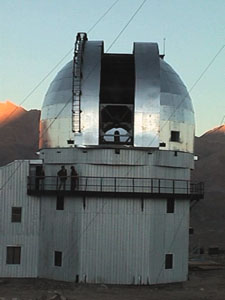Last autumn the European Space Agency’s Science Programme Committee met to define the priorities for
2008-2013. Its announced package included funding for two missions to study fundamental physics in
space – the gravitational wave detector LISA and the Microscope mission, which aims to investigate the
equivalence principle. Gravitational waves are predicted by Einstein’s theory of general
relativity.
The acceleration of massive bodies, such as orbiting neutron stars or newly forming black
holes, disturbs the fabric of space-time, sending out gravitational waves like ripples on a pond. The theory
has been tested indirectly, but gravitational waves have never been detected. LISA will be the first
gravitational wave space observatory. Three spacecraft will orbit the Sun 5 million kilometres apart in a
gigantic triangle. The separation of the spacecraft will be measured using lasers and, as gravitational waves
pass, this distance will oscillate. LISA is a joint project with NASA, which is due for launch in
2010.
ESA will also contribute to the Microscope mission, which is currently being built by the
French space agency, CNES. The Microscope mission will test the equivalence principle by measuring the
acceleration of masses in free fall about the Earth. The experiment consists of two electrostatic differential
accelerometers, the first containing two different materials and the second (a control) containing two
identical materials.









